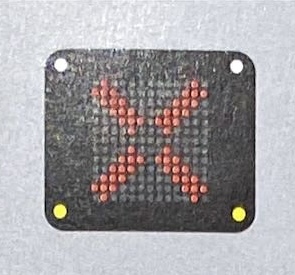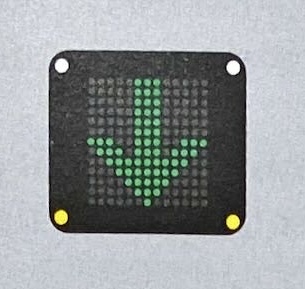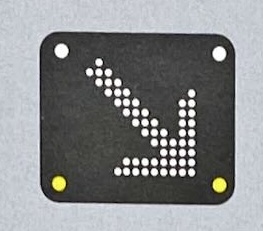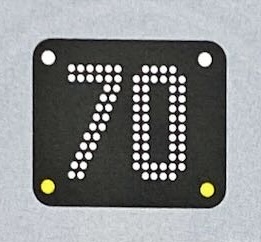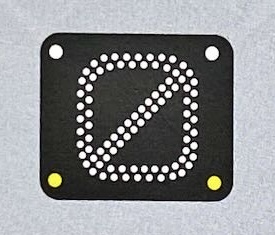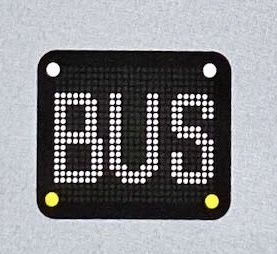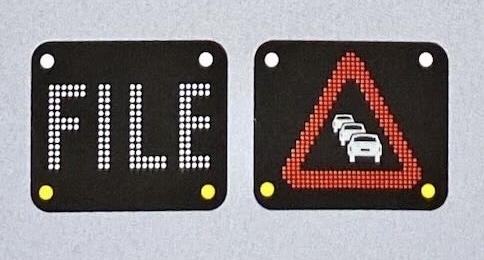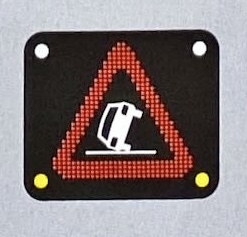Traffic lights regulate the safe flow of traffic. There are different types of traffic lights. The most famous is the three-colored traffic light.
Three-colored light
Red: Stop
🔴 ⚪️ ⚪️
Yellow: You must stop. You might continue only if you weren’t able to stop in time. (*)
⚪️ 🟡 ⚪️
Green: Drive
⚪️ ⚪️ 🟢
Priority vehicles
The obligation to stop at yellow or red lights does not apply to drivers of priority vehicles. Like ambulances, fire trucks, and police cars, when they have the lights/sirens on.
Oncoming traffic
With a three-color traffic light with round light points, you must take into account that oncoming traffic (may) also has a green light.
So do you want to turn left? Then give way to oncoming traffic.
Tricolor Traffic Light with Arrows
The illuminated arrow applies specifically to traffic moving in the direction indicated by the arrow.
When you see a green arrow, you typically do not need to anticipate oncoming traffic. However, always ensure the road is clear before proceeding, as a driver on the intersecting road might run a red light. ⚠️
Bottom sign clear to the right
Sometimes a three-colored traffic light is provided with the bottom sign ‘Right turn free for cyclists’. This means that yellow or red lights do not apply to (moped) cyclists and drivers of disabled vehicles who want to turn right. They are therefore allowed to drive through, but must give way to other traffic.
Is there a bicycle/moped path where mopeds also ride? Then the bottom sign says:
’Rechtsaf voor (brom) fiesteros vrij’ (meaning: right turn free for (moped) cyclists).
Inoperative
If a traffic light is not working, the yellow light usually flashes. This warns you that you are approaching a dangerous point - an intersection.
If the traffic lights do not work, the existing traffic signs, traffic signs on the road or normal traffic rules apply.
Two-colored traffic light
Red: stop.
🔴 ⚪️
Yellow: You must stop. You might continue only if you weren’t able to stop in time. (*)
⚪️ 🟡
* The yellow light allows crossing if not able to stop in time to prevent accident with cars coming behind due to hitting the breaks hard. Stopping distance
Mostly off, sometimes on
A two-color traffic light has only two colors, because it lights up only at times when you need to stop.
Can’t you stop safely when the yellow light turns on? Then you may continue driving.
You see the two-color traffic light at bridges, crosswalks, and entrances and exits where drivers of priority vehicles regularly drive. For example: entrances and exits at hospitals, police buildings, fire stations or the Public Health Service.
Yellow flashing light ⚠️
This flashing light is often found at dangerous points such as: crosswalks, blind intersections or other situations where extra caution is needed.
Lane lights
Matrix signs above roadways. The lights on the matrix signs can display different signs.
- Red cross: The lane is not to be used.
- Green arrow: The lane can be used at the designated maximum speed.
- Angled white arrow: The white arrow indicates that a red cross signal is imminent. Switch to the lane the arrow points towards.
- 70 km: Lane lights may display a custom speed limit that supersedes the regular lane speed limit.
- Luminous white termination mark: This sign symbolizes the end of any earlier prohibitions indicated by lane lights.
- Bus: This lane is solely for operators of line buses and other buses. If the matrix sign shows “lijnbus”, then the lane is reserved for drivers of line buses.
- Queue (FILE): An illuminated warning of congestion (J33): There’s congestion ahead. Adjust speed accordingly.
- Accident: An illuminated accident warning sign (J34): There’s been an accident.
Dynamic Road Information panels
Extra-large matrix signs that hang above the road or stand along the side of the road.
Provide information about the upcoming route with illuminated text.
Crossing lights
White flashing lights at a crossing indicate that you can cross safely. Red lights or flashing red lights require you to stop.
Bridge lights
Red lights or flashing bridge lights mean: stop! ⚠️
Tram and Bus Signals
Applicable only for tram and bus drivers.
The ‘nine-eye’ features white, red, and yellow lights. The combinations of these lights give direction indications.
Color code is the same as Three-colored light
Traffic Light for Cyclists
This traffic light, which displays an illuminated bicycle, is applicable to cyclists, moped riders, and drivers of disability vehicles.
For moped riders, the light is only applicable when they are on a bicycle/moped path.
Color code is the same as Three-colored light
Some cyclists and pedestrian lights have a button to request a green light.
Pedestrian light
A pedestrian light may have a flashing yellow light in the shape of a triangle, as an alternative to a red light. This signifies that pedestrians are permitted to cross at their own risk, provided they yield to other traffic. They may also choose to wait for the green light.
- Red: The pedestrian may not start crossing. If the pedestrian is already crossing, he may proceed quickly.
- Flashing green: The pedestrian may still cross, but it is about to turn red.
- Green: Crossing is allowed.
Rattle Ticker
Also: audible signal device
A pedestrian light can be equipped with a rattle ticker.
When the pedestrian light is red, it makes a quiet ticking sound. When it turns green, it changes to a fast rattling sound.
This lets blind and visually impaired pedestrians know if they can cross safely.
